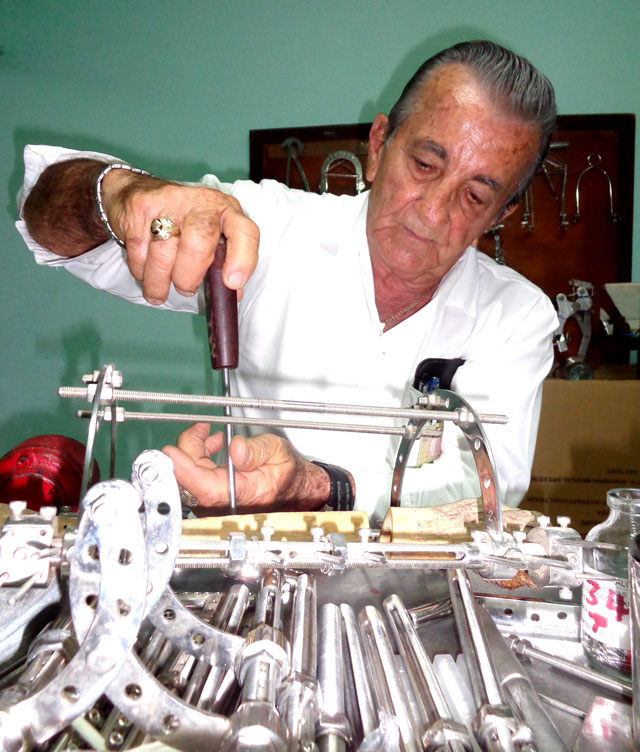
Raul Mata Garcia is an octogenarian technician from the Ministry of Health and he has on his desk at work external fixers, sheets, crews and other accessories he fixes and modifies and turns him into a genius of surgery tools.
He is part of the team that applies 32 alternatives of surgeries, teachings and hospital support, in view to keep the services in Orthopedics Department at the teaching provincial hospital Doctor Antonio Luaces Iraola from the Cuban province of Ciego de Avila.
Mata has in this institution a workshop to carry out his initiatives, which had become indispensible instruments for the job of the surgeons.
“Years ago four workers manually made 20 canes made of gauze a day. Today a person prepares 200 of them in eight hours in the wooden equipment I invented, which does not use electricity and humanizes the job in the sterilization center,” the innovator explained.
His invention with the greatest economic and social impact is the adaptation of a stomatology chair to a table for minimum access surgery, whose solution has a superior economic impact to the 69, 000 Cuban currency.
“We could no operate on shoulder because the osteoartroscopy chair needs a tower for the upper extremity we did not have, and this was a serious problem we had when they came to exchange experiences and receive the advice form specialists coming from Germany, Spain; then I said I was going to solve the problem.
“I adapted a metallic plate from equipment as support to a useless stomatology chair, we upholstered it, painted it, we added it other components to make it turn and it has been working for five years so far in osteoartroscopy knee, feet and hands surgeries.
“If we haven’t found this solution, the government would have had to invest 70, 000 US dollars to buy a table for these surgeries, but we managed to substitute it with one with low cost.”
Professor Mata, as he is called by his students and coworkers does not limit technological innovations to his specialty: “I not only contribute in orthopedics, I have also helped in the otolaryngology surgery, maternity, pediatrics and other departments of the hospital that had needed them.
“Either in my workplace or at home I invent, always thinking to keep the vitality of health assistance for better service to the people, which also depend on the efficiency of the scientific processes and the technological innovations.”